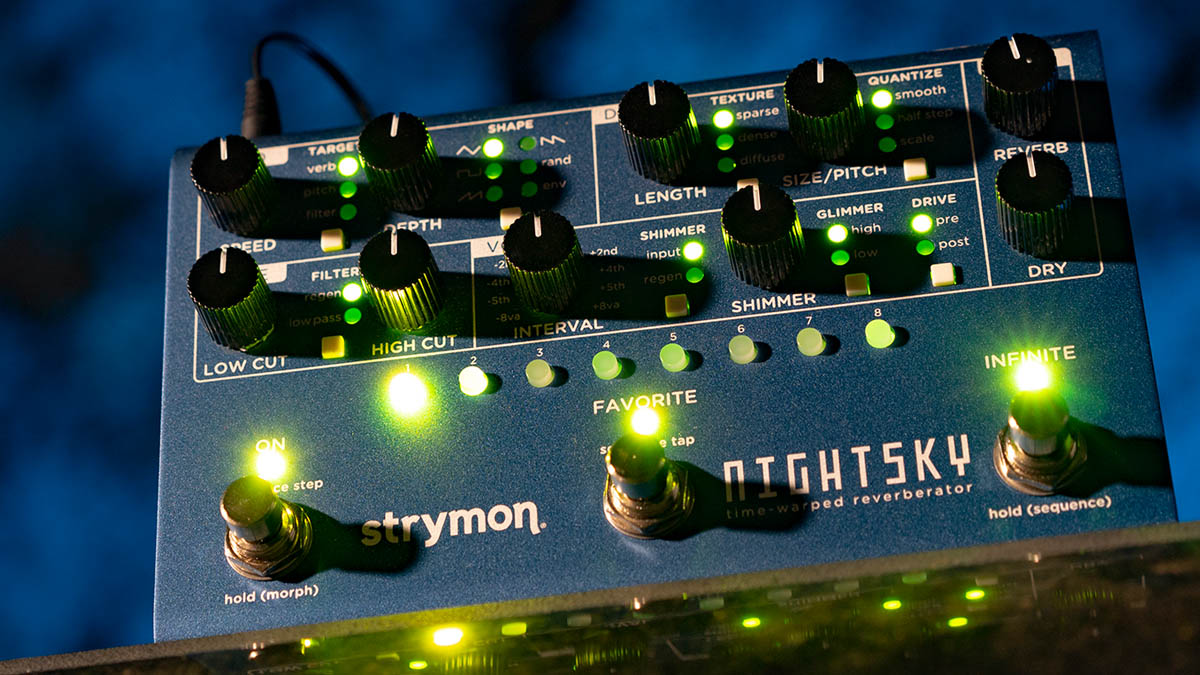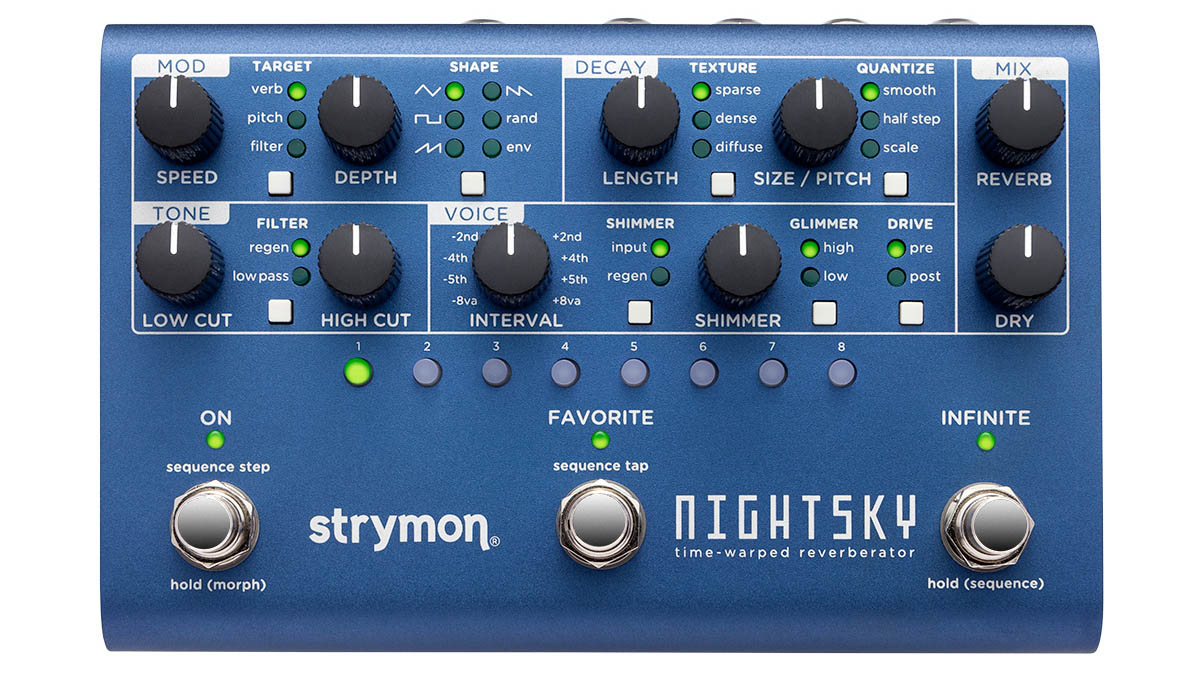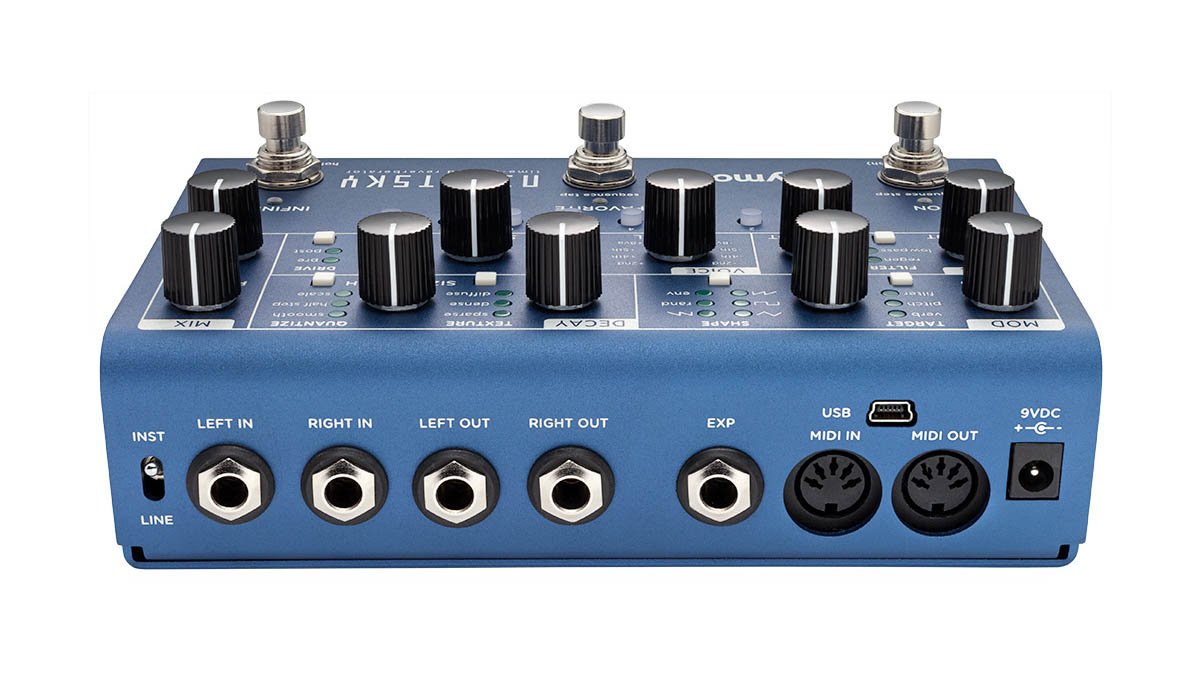Strymon reveals the NightSky, a "Time-Warped Reverberator" for all your extra-dimensional reverb needs
The stars align for those seeking new frontiers in reverb as the NightSky presents Strymon's most experimental multi-'verb yet

After a tantalising few days trying to decipher Strymon's cryptic sci-fi social media posts, the US-based effects giant has unveiled it's most experimental reverb unit yet, the NightSky.
If the BigSky and blueSky presented all the lush earthly reverbs you could need, the NightSky seems tooled for finding some reverb tones that no one has yet heard. The unit has a Instrument/Line input level switch, meaning it can be used with guitar, bass and synth, or you can link it to a mixer for adding some external effects.
What can it do? As the enclosure design, with its constellation of LEDs, suggests, the answer is a lot, but it all orbits the variable rate core of the reverb. Strymon says the NightSky "evolved from a desire to push the envelope and challenge the conventions of traditional reverb while also paying homage to the experimental reverberant sounds from decades past."
Around this variable rate core, Strymon layered on the functions – modulation, 4-pole resonant filter, and a Voice section that "enhances the aural spectrum of the reverb."
- The 10 best reverb pedals 2020: the best guitar effects for your pedalboard
- The best VST reverb plugins 2020: make some space in your DAW for these amazing ambience processors

What that leaves the user is three different types of reverb – Sparse, Dense, and Diffuse – and a whole lot of options when it comes to transforming it into something unique.
Sparse is described as a "granular-sounding reverb" that can be a clean-sounding reverb with a sustaining input or "interesting" (translation: weird) with staccato inputs. Dense is based around a plate-style reverb that can go potty when you increase the decay time. Diffuse for all your slow-building ambient textures, strange swells and so on.
There is a Mod section featuring selectable waveforms to modulate the reverb or tone filters. Use the Shape rotary dial and choose from 'triangle', 'square', 'ramp', 'saw', 'random' and 'env' modulating waveforms.
Want all the hottest music and gear news, reviews, deals, features and more, direct to your inbox? Sign up here.
Dials for Speed and Depth adjust the modulation accordingly, while there are three target switches to select where the modulation is applied. You can modulate the reverb, the pitch, which is the size of the reverb core, and the High Cut tone position.
The Tone section is more straightforward. Here you can do some heavy editing to the reverb's EQ, with knobs for Low Cut and High Cut, and a Filter switch to choose the High Cut's response. Regen cuts high frequencies from the reverb, darkening it as it decays. Low Pass is for a peaking low-pass filter for synth-style shaping of the reverb's frequencies.
The Voice section is where you can make some really powerful changes to the reverb, with the Shimmer controls allowing for pitch shifting of up to +/- 1 octave to the reverb and a rotary Interval dial offering +/- 2nd, +/- 4th, +/- 1, +/- 5th intervals in between.
Glimmer adds some harmonic processing allowing for top-end wash or low-end synth-style textures, while Drive introduces saturated overdriven harmonics to the reverb.

If all this sounds bewildering – and in abstract it does – take a look at the overhead shot of the unit above. There are a lot of features, but marked out in sections, it shouldn't be too difficult to get down to the important business of making strange and musical sounds.
Once you find some you like, you can save up to 16 presets on the unit itself, and access 300 via its fully-featured MIDI in/out. Connect an external expression pedal, a Strymon MultiSwitch Plus for accessing presets or engaging/bypassing the Voice, Tone and Mod sections. Hook it up to your computer via USB.

You can run the Strymon NightSky as true bypass or through a transparent analogue buffer. It ships with a 9V DC power supply and draws a minimum of 300mA of current.
And you can pre-order the NightSky now, priced $429.
See Strymon for more details.
Jonathan Horsley has been writing about guitars and guitar culture since 2005, playing them since 1990, and regularly contributes to MusicRadar, Total Guitar and Guitar World. He uses Jazz III nylon picks, 10s during the week, 9s at the weekend, and shamefully still struggles with rhythm figure one of Van Halen’s Panama.
